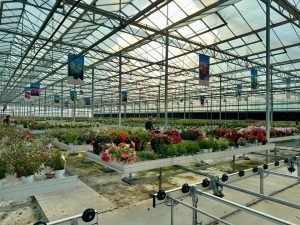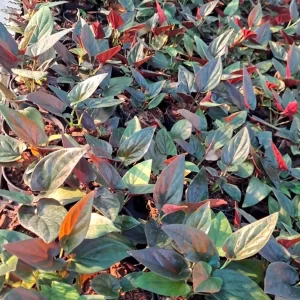- English
- Chinese
- French
- German
- Portuguese
- Spanish
- Russian
- Japanese
- Korean
- Arabic
- Irish
- Greek
- Turkish
- Italian
- Danish
- Romanian
- Indonesian
- Czech
- Afrikaans
- Swedish
- Polish
- Basque
- Catalan
- Esperanto
- Hindi
- Lao
- Albanian
- Amharic
- Armenian
- Azerbaijani
- Belarusian
- Bengali
- Bosnian
- Bulgarian
- Cebuano
- Chichewa
- Corsican
- Croatian
- Dutch
- Estonian
- Filipino
- Finnish
- Frisian
- Galician
- Georgian
- Gujarati
- Haitian
- Hausa
- Hawaiian
- Hebrew
- Hmong
- Hungarian
- Icelandic
- Igbo
- Javanese
- Kannada
- Kazakh
- Khmer
- Kurdish
- Kyrgyz
- Latin
- Latvian
- Lithuanian
- Luxembou..
- Macedonian
- Malagasy
- Malay
- Malayalam
- Maltese
- Marathi
- Mongolian
- Burmese
- Nepali
- Norwegian
- Pashto
- Persian
- Punjabi
- Serbian
- Sesotho
- Sinhala
- Slovak
- Slovenian
- Somali
- Samoan
- Scots Gaelic
- Shona
- Sindhi
- Sundanese
- Swahili
- Tajik
- Tamil
- Telugu
- Thai
- Ukrainian
- Urdu
- Uzbek
- Vietnamese
- Welsh
- Xhosa
- Yiddish
- Yoruba
- Zulu
- Kinyarwanda
- Tatar
- Oriya
- Turkmen
- Uyghur

I te nuinga o te wa ka whakamahia te tipu tipu o roto hitinium, ko te mea ano hoki ko Rererangi Wheronapa. Ko te ahua o te rau rereke me te maha o nga hues e tono ana ki nga iwi maha mo te tipu tipu tipu o roto.

Hitinium
Te hiranga o te whakaahua marama
Ko nga taumahi o te tipu tipu i ahu mai i te photosynthesis. Ka whakaputahia e nga tipu nga mea o te tipu, te whakarereke i te kaha o te maama ki te puka matū, me te whakarato i a ratau te kaha me te kai ma te whakaahua. Ko te synginium ano te whakawhirinaki ki te whakaahua whakaahua; No reira, ko te maarama kaore i te marama ka awe i tona whanaketanga me te tipu.
Te ahua me te tae o nga rau
Ko te tae me te ahua o nga rau syngenium e whakawhirinaki ana ki te maama. Ahakoa kaore i te pai, he maamaa ranei te kaha ka raru ai nga rau, ko te kowhai ranei me te maama e tika ana kia pai ake te rau me te tino hihiri.
Te reiti hauora me te tipu o te tipu
Enough and suitable light may help syngonium develop quickly, improve its general condition, and increase its resistance against diseases. Either too little or too much light will compromise the plant’s health and raise the insect and disease incidence.
Momo Maama: Maama Te Maama
Ko nga tipu o waho te nuinga o te whakawhirinaki ki te maama taiao. Ko nga waa maha o te ra me te kaha ka taea e tetahi te wehe i te maama maori ki te ra katoa, haurua te marama, me te maama.
puna marama
Kaore pea a Synginium e kitea te maama taiao i roto i tetahi waahi o roto. Ka taea pea e tetahi te whakamahi i nga puna maamaa marama mo te whakamarama i roto i tenei waa. Ko nga rama rama, he rama rama, me nga rama konutai-nui he maamaa noa nga hua o te syngenium me nga rerenga rerenga rereke kia rite ki nga whakaritenga whanaketanga.
Tohu o te kaha ngawari
I te nuinga o te waa i Lux, he tohu ngawari te kaha o te ahuatanga o te whakamarama. Kei te hiahia a SyNngium kia kaha te kaha ki waenga i te 1000 me te 3000 lux. Ko te maama, he maamaa ranei he ngoikore ranei ka awe i tona whanaketanga i ia wa.
Te paanga o nga taiao maama i runga i te whanaketanga o te synginium
Nga tikanga o te whakamarama
Syngonium’s leaves burn readily under intense light conditions and have burnt edges or yellow patches. Strong sunshine especially in summer might cause the water in the leaves to evaporate too rapidly, therefore influencing their usual physiological processes.
Te whakamarama kino
Syngonium’s dull-colored leaves grow slowly and are prone to lanky development under low light levels. The leaves start to thin and shape-wise vary. Long-term darkness will also reduce the disease resistance of the plant and raise the pest and disease incidence.
Nga tikanga e pa ana ki te maama marara
For Syngonium, scattered light is the best fit light condition. This kind of light may minimize harm caused by direct intense light, equally illuminate the plants, and provide adequate light energy for photosynthesis. Syngonium’s leaves grow robust and have brilliant color in dispersed light.
Tuhinga o mua
Nga tohu o te whakamarama koretake
Ka kowhai nga rau, ka hinga ranei; Ko te hue he drab.
Ka tipu te tipu ka huri haere.
Nga rau ka horoia ka tiimata ka tiimata te ahua rereke.
Ka mate te mate o te mate me nga mate me nga mate o te mate.
Tuhinga o mua
Ko nga rau kei roto i nga maaka i nga kaakahu kowhai ranei.
Ka maroke nga rau me te mangu ka ngaro te wai tere.
The plant’s general condition worsens and growth stops.
Whakatika mo te koretake me te tino marama
Whakaarahia te kanapa.
Ko te synginium kaore e nui te marama ka tapiritia e nga tikanga e whai ake nei:
Ki te whakapiki ake i te maama taiao, whakanoho te tipu i te taha o te matapihi.
Whakaata marama te whakamahi i nga pakitara ma, i nga whakaata ranei kia kaha ake ai te kaha o te maama.
Mo nga rama taapiri, whakamahia nga puna marama maamaa; Whiriwhiria nga rama e pai ana mo te whanaketanga tipu, tae atu ki nga rama tipu a te arahi.
Maamaa
You can lower Syngonium’s too strong light with the following techniques:
Hei urungi i te ra tika, nekehia te tipu ki te semi-uira, i nga waahi ngawari ranei.
Tāutahia te kupenga, i te ra ranei i runga i nga matapihi hei whakaiti i te kaha o te marama.
Hipokina nga rau mai i te kino o te rama marama ma te whakamahi i te whakarara i te korikori, otaota matomato ranei.
Whakapai ake i nga taiao whakamarama o roto.
Whiriwhiria te waahi e tika ana.
Me whakanoho te synginium ki nga tautuhinga o roto o roto e whakaarohia ana nga ahuatanga marama. Ko te tikanga, ko te waahi e tata ana ki te rawhiti-anga atu, ko te matapihi ranei e pa ana ki te taha ki te heke mai i te mea ka taea e te maama te maama me te aukati i te maama kaha i te poutumarotanga.
Whakamahia nga puna marama o roto.
Furthermore extremely crucial are the choice and placement of interior light sources. One may use LED plant lights as extra illumination. This kind of lamp can provide suitable wavelength and intensity to satisfy Syngonium’s illumination requirements. Hanging the light 30 to 50 cm above the plant, it should be lit 12 to 16 hours a day.
Whakatika i to pou i te nuinga o te waa.
Ka tipu noa te synginium i raro i te marama homo. Ko te hurihanga o nga wa katoa ka taea e nga taha katoa o te tipu te maama, no reira e aukati i nga ahuatanga o te tipu tipu me te rau kore.

Hitinium
Whakaranu tika i waenga i nga tipu maha
Ka taea te whakanoho i te synginium ki roto i te whakariterite tipu tipu o roto me etahi atu tipu e hiahia ana kia rite ki te hanga i te miihini-a -coolystem, poipoia tetahi ki tetahi ka noho tahi.
Hitinium is an indoor green plant with great decorative value and great adaptability; however, it has some needs for light. Appropriate light may encourage its healthy development, making the leaves attractive in form and brilliant in color. The importance of light, the type of light, the effects of various light conditions on the growth of Syngonium, the symptoms of insufficient and excessive light and their remedies, and the optimization of the indoor light environment are among the several angles of discussion in this paper. By means of scientific and sensible light management, Syngonium not only enhances the interior environment’s natural beauty but also the comfort and air quality of the living space, thus augmenting the abundance of greeneries and vitality in people’s life.



